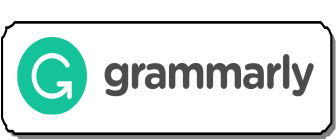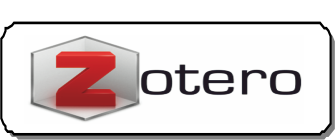Implementasi Pembelajaran Fikih Berbasis Multimedia Interaktif Macro-Enabled untuk Meningkatkan Keaktifan Siswa
Abstract
Di beberapa sekolah negeri dan swasta di Kabupaten Demak, terdapat beberapa permasalahan dalam pembelajaran pendidikan agama Islam diantaranya adalah pengajaran yang masih dominan klasikal (ceramah), di beberapa madrasah dan sekolah rata-rata didominasi oleh guru yang usianya sudah tidak tergolong muda, siswa sering merasa bosan dan bahkan mengantuk ketika pembelajaran PAI, keaktifan siswa serta hasil belajar yang cenderung rendah. Penelitian ini bertujuan: mendeskripsikan bagaimana implementasi pembelajaran fikih kelas X materi zakat berbasis multimedia pembelajaran interaktif – power point (macro-enabled) untuk meningkatkan keaktifan siswa MAS Miftahussalam Wonosalam Kabupaten Demak. Penelitian ini menggunakan pendekatan kualitatif. Sumber data penelitian ini adalah guru dan siswa, teknik pengumpulan data dilakukan menggunakan wawancara, dokumentasi, dan observasi. Hasil penelitian ini adalah ketika pembelajaran fikih pada materi zakat dilaksanakan di laboratorium komputer dengan menggunakan multimedia pembelajaran interaktif – power point (macro-enabled), terlihat semua siswa kelas X IPA tampak semangat sekali dan juga sangat antusias untuk mengikuti proses pembelajaran. Namun karena jumlah komputer yang ada di laboratorium komputer hanya 23 buah sedangkan jumlah siswa kelas X IPA sebanyak 40 orang, maka siswa dibagi menjadi 20 kelompok dimana setiap kelompok terdiri dari 2 orang siswa untuk menggunakan1 komputer. Setelah melihat indikator keaktifan belajar siswa, multimedia pembelajaran interaktif ini terbukti mampu meningkatkan keaktifan belajar siswa.References
Hamid, Moh. Sholeh, Mendesai Kegiatan Belajar-Mengajar Begitu Menghibur Metode Edu Tainment Cet. 2, Yogyakarta: DIVA Press, 2012.
Wena, Made, Strategi Pembelajaran Inovatif Kontemporer (Suatu Tinjauan Konseptual Operasional) Cet. Ke-6, (Jakarta Timur: PT Bumi Pustaka, 2011.
Syaodih Sukmadinata, Nana, Metode Penelitian Pendidikan, Bandung: PT. Remaja Rosdakarya, 2007.
Jumantoro, Totok dan Munir Amin,Samsul, Kamus Ushul Fikih, Jakarta: Amzah, 2009.
Ash-Shidqy, T.M Hasbi, Pengantar Hukum Islam, Jakarta: Bulan Bintang, 1996.
Bakry, Nazar, Fiqh Dan Ushul Fiqh, Jakarta:PT Raja Grafindo Persada, 2009.
Mulyasa, Kurikulum Tingkat Satuan Pendidikan, Bandung: Remaja Rosdakarya, 2006
Ma’mur Ali, Jamal, 7 Tips Aplikasi PAKEM Cet.7, Yogyakarta: DIVA Press, 2013.
Djamarah, Syaiful Bahri, dan Zain, Aswan, Strategi Belajar Mengajar Cet.IV, Jakarta: Rineka Cipta, 2010.
Asyhar, Rayandra, Kreatif Mengembangkan Media Pembelajaran, Jakarta: Referensi, 2012.
Arsyad, Azhar, Media Pembelajaran, Jakarta: Rajawali Pers, 2009.
Daryanto, Media Pembelajaran, Yogyakarta: Gava Media, 2010.
Schunk, Dale H., Learning Theories an Educational Perspective Terj. Edisi Ke-6, Yogyakarta: Pustaka Pelajar, 2012.
Nana Sudjana dan Ahmad Rivai, Media Pengajaran, Bandung: Sinar Baru Algensindo, 2002.
Asyhar, Rayandra, Kreatif Mengembangkan Media Pembelajaran, Jakarta: Referensi, 2012.
Marcovitz, D. M, Powerful Power Point for educators : using Visual Basic for applications to make Power Point interactive. Wesport: Libraries Unlimited, 2004.
Sardiman, A. M., Interaksi dan Motivasi Belajar Mengajar, Jakarta: PT. Raja Grafindo Persada, 2007
Dimyati dan Mudjiono, Belajar dan Pembelajaran, Jakarta: Rineka Cipta, 1999.
Wina Sanjaya, Strategi Pembelajaran Berorientasi Standar Proses Pendidikan, Jakarta: Kencana, 2009.
Sudjana, Nana, Dasar-Dasar Proses Belajar Mengajar, Bandung: Remadja Karya, 1988.
Jurnal
Suartama, I. Pengembangan Mutimedia untuk Meningkatkan Kualitas Pembelajaran pada Mata Kuliah Media Pembelajaran. Jurnal Pendidikan dan Pengajaran, Jilid 43,Nomor 3, Oktober 2010.
Nursit, Isbadar, Pengembangan Multimedia Interaktif Berbasis Power Point(Macro-Enabled) Pada Mata Kuliah Geometri Euclid Dalam Pembelajaran Matematika,Jurnal Media Pendidikan Matematika “J-MPM” Vol. 4 No. 1, ISSN 2338-3836.
Nanindra Mahastrajaya, Anisa, Pengembangan Multimedia Pembelajaran Interaktif Mata Pelajaran Pendidikan Agama Islam Materi Melaksanakan Sholat Untuk Siswa Kelas IV SDN Lempuyangwangi Yogyakarta, Artikel Jurnal.
Hamidi, Nur, Pengembangan Media Pembelajaran Interaktif Pendidikan Agama Islam Berbasis Adobe Flash Professional CS6 Untuk Mendukung Implementasi Kurikulum 2013, Jurnal Pendidikan Agama Islam, Vol. XIV, No. 1, Juni 2017.
Website
Ilham. 2009. Upaya Guru Membangkitkan Keaktifan Siswa. Online at: bangilham.wordpress.com/2009/03/31/pentingnya-upaya-guru-dalammengembangkan-keaktifan-belajar-siswa/.
Sumber dari https://www.kemdikbud.go.id/main/blog/2018/03/gunakan-komputer-dalam-pembelajaran-bukan-hanya-unbk diakses pada 1 Mei 2018.
Diakses dari https://kemenag.go.id/berita/read/363759/kakanwil-jatim--100--madrasah-di-surabaya-terapkan-unbk pada 1 Mei 2018.
http://media.diknas.go.id/media/document/PAI.pdf diakses tanggal 20 Mei 2018.
Diakses dari https://support.office.com/id-id/article/membuat-makro-di-Power Point-5b07aff6-4dc9-462f-8fc9-66b4c5344e7e pada 1 Mei 2018.
Copyright (c) 2019 SYAMIL: Jurnal Pendidikan Agama Islam (Journal of Islamic Education)

This work is licensed under a Creative Commons Attribution-ShareAlike 4.0 International License.
Please find the rights and licenses in SYAMIL Jurnal Pendidikan Agama Islam (Journal of Islamic Education). By submitting the article/manuscript of the article, the author(s) agree with this policy. No specific document sign-off is required.
1. License
The non-commercial use of the article will be governed by the Creative Commons Attribution license as currently displayed on Creative Commons Attribution-ShareAlike 4.0 International License.
2. Author(s)' Warranties
The author warrants that the article is original, written by stated author(s), has not been published before, contains no unlawful statements, does not infringe the rights of others, is subject to copyright that is vested exclusively in the author and free of any third party rights, and that any necessary written permissions to quote from other sources have been obtained by the author(s).
3. User/Public Rights
SYAMIL spirit is to disseminate articles published are as free as possible. Under the Creative Commons license, SYAMIL permits users to copy, distribute, display, and perform the work for non-commercial purposes only. Users will also need to attribute authors and Register on distributing works in the journal and other media of publications. Unless otherwise stated, the authors are public entities as soon as their articles got published.
4. Rights of Authors
Authors retain all their rights to the published works, such as (but not limited to) the following rights;
Copyright and other proprietary rights relating to the article, such as patent rights,
The right to use the substance of the article in own future works, including lectures and books,
The right to reproduce the article for own purposes,
The right to self-archive the article (please read out deposit policy),
The right to enter into separate, additional contractual arrangements for the non-exclusive distribution of the article's published version (e.g., post it to an institutional repository or publish it in a book), with an acknowledgment of its initial publication in this journal (SYAMIL Jurnal Pendidikan Agama Islam (Journal of Islamic Education)).
5. Co-Authorship
If the article was jointly prepared by more than one author, any authors submitting the manuscript warrants that he/she has been authorized by all co-authors to be agreed on this copyright and license notice (agreement) on their behalf, and agrees to inform his/her co-authors of the terms of this policy. SYAMIL will not be held liable for anything that may arise due to the author(s) internal dispute. SYAMIL will only communicate with the corresponding author.
6. Royalties
Being an open accessed journal and disseminating articles for free under the Creative Commons license term mentioned, author(s) aware that SYAMIL entitles the author(s) to no royalties or other fees.
7. Miscellaneous
SYAMIL will publish the article (or have it published) in the journal if the article’s editorial process is successfully completed. SYAMIL editors may modify the article to a style of punctuation, spelling, capitalization, referencing and usage that deems appropriate. The author acknowledges that the article may be published so that it will be publicly accessible and such access will be free of charge for the readers as mentioned in point 3.












